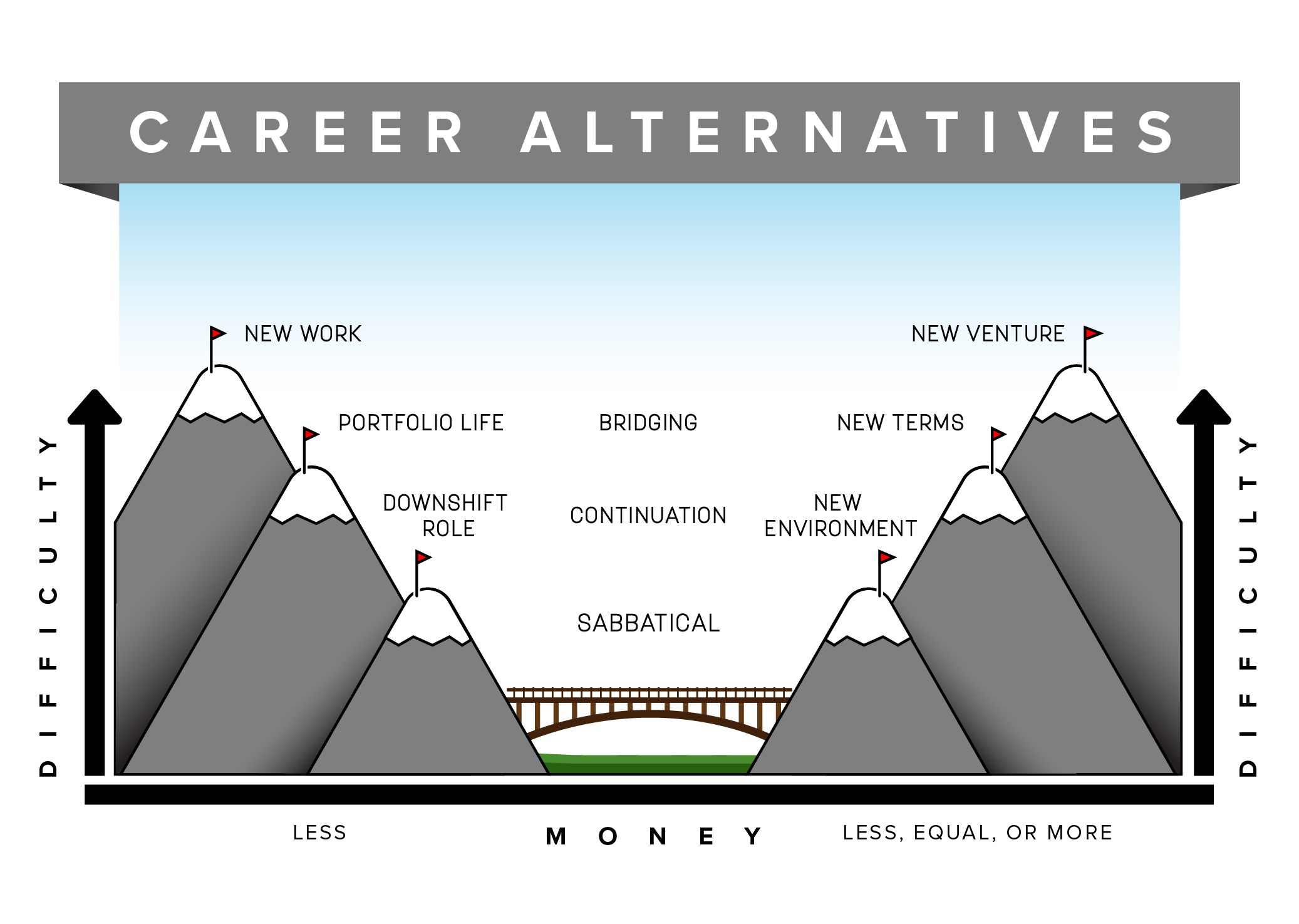Navigating Career Crossroads: Case Studies in Professional Development dives headfirst into the messy, exciting, and sometimes terrifying world of career changes. We’ll explore real-life stories of people facing everything from unexpected layoffs to planned career shifts, showing you how they navigated the challenges and came out on top. Get ready for practical advice, relatable experiences, and a whole lot of inspiration to tackle your own career journey, whatever twists and turns it may take.
This guide unpacks the process of identifying your skills and passions, exploring potential career paths, and crafting a winning job search strategy. We’ll examine successful approaches to networking, resume building, and interviewing, using real-world case studies to illustrate key concepts. Whether you’re facing a sudden career disruption, aiming for a promotion, or plotting a complete career overhaul, this resource offers the tools and insights you need to confidently navigate your career crossroads.
Defining Career Crossroads: Navigating Career Crossroads: Case Studies In Professional Development

Navigating a career crossroads is a common experience, often characterized by moments of significant decision-making that can profoundly impact one’s professional trajectory. These aren’t always dramatic, earth-shattering events; instead, they often present as periods of uncertainty and reflection, prompting individuals to reassess their current path and consider alternative options. Understanding the nature of these crossroads, their emotional toll, and the external factors influencing them is crucial for effective career development.Career crossroads represent junctures where individuals are compelled to make crucial choices regarding their professional lives.
These decisions can range from relatively minor adjustments to complete career overhauls. The experience is often characterized by a sense of being “stuck,” feeling unfulfilled, or facing unexpected obstacles that necessitate a change in direction.
Common Scenarios Constituting Career Crossroads
Several scenarios frequently lead individuals to a career crossroads. These include graduating from college and entering the workforce, facing job loss or redundancy, experiencing a lack of growth opportunities within a current role, or a desire for a more fulfilling or meaningful career. A significant life event, such as marriage, parenthood, or relocation, can also trigger a reassessment of one’s professional path.
Furthermore, individuals may find themselves at a crossroads when their skills become obsolete due to technological advancements or market shifts. The feeling of being stagnant or unchallenged can also be a significant impetus for change.
Emotional and Psychological Impact of Navigating Career Change
The emotional and psychological impact of navigating a career change can be substantial. Individuals may experience feelings of anxiety, uncertainty, and even fear about the future. Self-doubt and a lack of confidence can emerge as individuals question their skills and abilities. The process can be emotionally draining, particularly when significant life adjustments are involved. The stress of job searching, the uncertainty of a new career path, and the potential financial implications can all contribute to feelings of overwhelm and pressure.
It’s important to acknowledge these emotions as normal and seek support when needed. For example, a person leaving a stable, high-paying job to pursue a passion project might experience anxiety related to financial security, while someone laid off might grapple with feelings of self-worth and inadequacy.
External Factors Influencing Career Decisions
External factors play a significant role in shaping career decisions and often contribute to the emergence of career crossroads. Economic downturns, for example, can lead to job losses and force individuals to re-evaluate their career options. Technological advancements can render certain skills obsolete, requiring individuals to adapt and acquire new competencies. Changes in family circumstances, such as the birth of a child or the need to care for an aging parent, can also significantly influence career choices.
Furthermore, geographic location can limit opportunities, and societal expectations can influence career paths, sometimes leading to dissatisfaction and the need for a change. For instance, a significant industry shift, such as the decline of the coal industry in certain regions, can create a career crossroads for many workers in that sector, requiring them to acquire new skills or relocate.
Assessing Skills and Interests

Figuring out what you’re good at and what you enjoy is crucial for navigating career crossroads. This process involves more than just listing your job titles; it’s about deeply understanding your capabilities and passions to find a career path that’s both fulfilling and successful. This section will explore effective methods for identifying your transferable skills, uncovering hidden talents, and aligning your career aspirations with your personal values.Identifying transferable skills is key to showcasing your value to potential employers, even when transitioning to a different field.
Many skills learned in one job are applicable to others. This allows you to highlight your versatility and experience in a compelling way to prospective employers.
Identifying Transferable Skills
To effectively identify your transferable skills, consider creating a skills inventory. Start by listing all your previous roles and responsibilities. Then, break down each role into specific tasks and the skills required to perform them successfully. For instance, a role as a barista might require customer service skills, communication skills, and time management skills. These are transferable to many other jobs, such as retail, teaching, or even project management.
Next, categorize these skills into broader skill groups, such as communication, problem-solving, leadership, technical skills, and interpersonal skills. This organized list will highlight the skills you possess, making it easier to tailor your resume and cover letters to different job applications. Consider using a matrix to visually represent your skills across different roles, highlighting transferable skills across various job contexts.
Uncovering Hidden Talents and Passions
Discovering hidden talents and passions often requires introspection and exploration. One effective method is to reflect on activities you genuinely enjoy, even those outside of your professional life. What hobbies do you pursue? What projects do you undertake in your free time? What challenges do you actively seek out?
These activities often reveal underlying talents and passions you may not have consciously recognized. For example, someone who enjoys volunteering at an animal shelter might discover a passion for animal welfare, leading to a career in veterinary science or animal rescue. Another approach is to explore different activities and fields through volunteering, taking online courses, or attending workshops.
Experimenting with new experiences can unexpectedly reveal hidden talents and interests. Think of it as a personal exploration process to uncover your strengths and passions.
Self-Assessment Tool for Career Compatibility with Personal Values
Aligning your career with your personal values is vital for long-term job satisfaction and well-being. The following self-assessment tool can help evaluate this compatibility.
| Value | Importance (1-5, 5 being most important) | How this job aligns with this value |
|---|---|---|
| Creativity | ||
| Independence | ||
| Helping Others | ||
| Financial Security | ||
| Work-Life Balance |
This table allows you to rate the importance of various personal values and then assess how well a potential career path aligns with each value. By honestly evaluating this, you can make more informed career decisions that better reflect your personal priorities. A high score across multiple values indicates a strong compatibility between the job and your values.
For example, someone who values creativity and independence might find a career as a freelance artist highly compatible with their personal values. Conversely, someone who prioritizes financial security and work-life balance might find a stable, traditional job more appealing.
Exploring Career Options
Choosing a career path can feel overwhelming, especially at a crossroads. This section focuses on comparing and contrasting different career options based on your unique skills and interests, prioritizing them, and examining factors like salary, education, and job outlook. We’ll use a structured approach to help you navigate this crucial decision-making process.
Comparing and Contrasting Career Paths
Matching your skills and interests with potential career paths is key. For example, someone with strong analytical skills and a passion for problem-solving might consider roles in data science or engineering, while someone with excellent communication and interpersonal skills might thrive in marketing or human resources. It’s important to thoroughly research different fields to understand the day-to-day realities of each profession.
Consider job shadowing or informational interviews to gain firsthand insights. Analyzing job descriptions and understanding the required skills and responsibilities will illuminate the best fit for your profile.
Prioritizing Potential Career Options
Once you’ve identified several promising career paths, create a prioritized list. This prioritization should reflect your personal values, career goals (short-term and long-term), and realistic assessment of your skills and qualifications. Consider factors such as work-life balance, potential for growth, and alignment with your overall life aspirations. For example, a high salary might be less important to someone prioritizing work-life balance, while rapid career advancement might be a key factor for someone highly ambitious.
The rationale behind your prioritization should be clearly articulated.
Career Path Comparison, Navigating Career Crossroads: Case Studies in Professional Development
The following table compares three distinct career paths: Software Engineer, Marketing Manager, and Registered Nurse. These examples illustrate how different career paths require varying levels of education, offer different salary expectations, and have different job outlooks. Remember that these are averages and can vary based on location, experience, and employer.
| Career Path | Average Salary (USD) | Education Required | Job Outlook |
|---|---|---|---|
| Software Engineer | $110,000 – $150,000 | Bachelor’s degree in Computer Science or related field | Strong, with projected growth due to increasing technological demands. |
| Marketing Manager | $70,000 – $120,000 | Bachelor’s degree in Marketing or related field; MBA preferred for senior roles. | Moderate growth, with opportunities for advancement depending on specialization and industry. |
| Registered Nurse | $60,000 – $90,000 | Associate’s or Bachelor’s degree in Nursing; RN license required. | Strong, driven by an aging population and increasing healthcare needs. |
So, there you have it – a roadmap to successfully navigating those inevitable career crossroads. Remember, changing careers or even just leveling up in your current role isn’t just about finding a new job; it’s about aligning your work with your values and passions. By understanding your skills, building a strong network, and embracing the learning process, you can confidently create a fulfilling and successful career path, no matter what life throws your way.
Now go out there and make some career magic happen!
Questions Often Asked
What if I don’t know what I’m passionate about?
That’s totally normal! Explore different hobbies, volunteer work, or even shadow someone in a field that interests you. Self-reflection exercises and career aptitude tests can also help uncover hidden passions.
How do I handle rejection during the job search?
Rejection is part of the process. Don’t take it personally; view it as feedback. Analyze what you could improve and keep refining your approach. Focus on the next opportunity and keep applying!
Is it too late to change careers in my 30s/40s/50s+?
Absolutely not! It’s never too late to pursue a fulfilling career. Many people successfully change careers later in life. Focus on your transferable skills and highlight your experience. Be prepared to upskill or reskill if needed.
